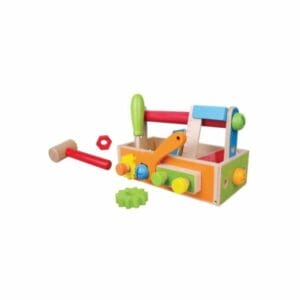Helping Kids Learn Through Play: Tips for Parents
Play is one of the most powerful ways children learn. Through play, kids explore the world, develop problem-solving skills, build creativity, and even pick up academic concepts—all without feeling like they’re “learning” in the traditional sense. Here are some friendly tips on how to encourage learning through play and make the most out of playtime with your child!
1. Let Them Lead the Way
Kids learn best when they’re playing in ways that interest them. Whether they’re into building, pretending to be animals, or creating art, follow their lead. If your child wants to turn a box into a spaceship, go with it! By letting them direct their play, you’re encouraging independence, decision-making, and creativity.
2. Provide Open-Ended Toys
Open-ended toys, like building blocks, art supplies, and play dough, allow kids to use their imaginations without set instructions. They can become anything your child wants—blocks turn into castles, clay becomes a dinosaur. These kinds of toys promote problem-solving and help kids learn to think outside the box.
3. Use Everyday Objects for Exploration
You don’t need fancy toys for quality play. Everyday items like spoons, pots, cardboard boxes, and even water are fantastic for playtime. Fill a container with rice or beans, add some scoops, and you’ve got a sensory activity that’s fun and helps develop fine motor skills. Kitchen items can be “tools” for a scientist or “treasures” for a pirate, making playtime accessible and creative.
4. Encourage Pretend Play
Pretend play is magical for young learners. When kids pretend to be chefs, astronauts, or animals, they practice language skills, social skills, and empathy. Set up a small “grocery store” with items from the pantry, or a “hospital” with stuffed animals as patients. Pretend play helps children understand the world and learn to communicate in different situations.
5. Get Outside for Nature-Based Learning
The outdoors is full of opportunities for learning. Take a walk and observe the trees, birds, and insects together. Collect leaves, rocks, or flowers and talk about them. Activities like digging, jumping, and climbing also improve gross motor skills. Nature invites curiosity, builds observation skills, and gives kids a chance to experience science hands-on.
6. Play Simple Games That Teach Math and Language
Games like Uno, Go Fish, and even classic board games teach kids about numbers, colors, shapes, and strategy. Counting dots, reading instructions, and taking turns all help build important skills without the formal feel of a lesson. Card games, for instance, can help kids with number recognition, matching, and even basic math.
7. Incorporate Art and Crafts for Hands-On Learning
Art and crafts provide wonderful ways for kids to learn through creativity and self-expression. Set up a simple art station with colored paper, crayons, glue, and safe scissors. Encourage them to draw, paint, or create collages related to things they’re learning about, like animals, shapes, or seasons. Crafting helps develop fine motor skills, enhances concentration, and fosters creativity. Plus, talking about their artwork gives them a chance to practice language skills by describing what they’ve made. Art projects don’t need to be elaborate—simple materials and an open-ended approach are all you need to make learning fun and engaging.
8. Let Them “Help” with Real-Life Tasks
Children love to imitate adults, and chores can actually be fun learning opportunities. Invite your child to help with simple tasks like setting the table, sorting laundry, or watering plants. These activities teach responsibility, sequencing (first we fold, then we stack), and fine motor skills—all while making them feel like they’re part of the team.
9. Read Together and Make It Interactive
Reading isn’t just about listening; it’s a wonderful opportunity for conversation. Ask questions about the story, let your child predict what happens next, or have them point out colors, letters, or animals on the page. Books are full of learning potential, and making reading a shared activity helps build language and comprehension skills.
10. Celebrate the Mess!
Play often comes with mess, and that’s okay! When kids are deep in creative play, they’re learning to explore without limits. Allow them to build, mix, and experiment without worrying too much about the cleanup. The mess can always be sorted out later, but the learning and joy they get from playing freely are worth it.
Key Takeaway
Learning through play is about giving kids the freedom to explore, imagine, and create. By following their interests, using everyday materials, and keeping activities simple, you’re supporting a natural way of learning that feels joyful and fun. Remember, play isn’t just for fun—it’s the foundation of how children understand the world. So go ahead and let them play! They’re learning far more than you might realise.
A Selection from our Educational Toys Range
-
 Casdon Play Cash£2.60
Casdon Play Cash£2.60 -
 Jumini 40 pcs Traffic building blocks£16.99
Jumini 40 pcs Traffic building blocks£16.99 -
 Jumini Work Bench£80.00
Jumini Work Bench£80.00 -
 Jumini Tool Box / 20 -Piece Construction Set£22.99
Jumini Tool Box / 20 -Piece Construction Set£22.99 -
 Jumini Foldable Farm House£18.99
Jumini Foldable Farm House£18.99 -
 Learning Carpet: Drive Around the Park£34.00
Learning Carpet: Drive Around the Park£34.00 -
 Wooden Flower Cupcake Stand£12.99
Wooden Flower Cupcake Stand£12.99 -
 K’nex -Thrill Rides 3-in-1 Classic Amusement Park Building£52.99
K’nex -Thrill Rides 3-in-1 Classic Amusement Park Building£52.99 -
Product on sale
 100 Things for Little Children to do on a JourneyOriginal price was: £6.99.£5.99Current price is: £5.99.
100 Things for Little Children to do on a JourneyOriginal price was: £6.99.£5.99Current price is: £5.99.
Join our mailing list
Sign up to our Emailing List & Get the Latest Information and Offers on Resources
Thank you for joining !
Something went wrong.













